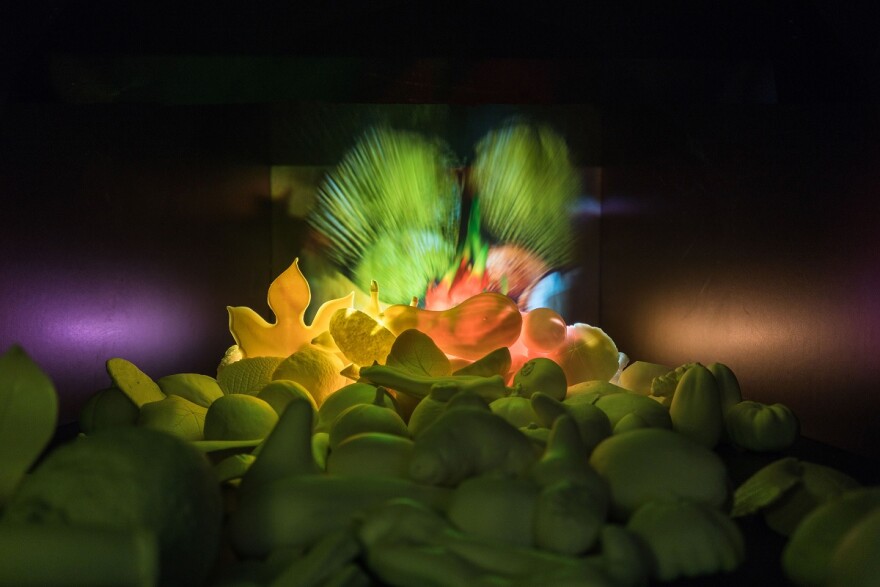This year, the Contact Hawai‘i show at the Honolulu Museum of Art School asked artists to envision our islands a thousand years from now. Some artists came up with post-apocalyptic scenarios, a giant white tiki carving is bound by ropes on the front lawn, while others explored tourism, climate change, relationships, and more. HPR’s Noe Tanigawa reports on one artist’s vision of Hawai‘i as a bountiful Eden.

Find out more about agroforestry this Sunday, April 16, 2017, 2pm at the Honolulu Museum School. Sunday is the closing day for Contact Hawai‘i3017. A panel on the future of art in Hawai‘i is set for Sunday, April 23rd
Agroforestry and Food
SUNDAY, April 16 | 2:00pm | Honolulu Museum of Art School
What is Agroforestry? Where did it come from and why is it important for Hawai?i’s future? It all starts with food and we are not talking about mono-cropping. Several art installations, including two at Aupuni Place at Ward Warehouse, speak to the ethereal nature of a “future past" dream, to have diversity in our food sources. Join Scott McCoy of the not-for-profit organization, [UN]cultivated Earth and artist Taiji Terasaki for a conversation on Agroforestry and Terasaki’s CONTACT 3017 commission.
SUNDAY, April 23 | 4:00pm | Doris Duke Theatre (Honolulu Museum of Art)**
Panelists include Jasper Wong, POW! WOW! Hawaii, Katherine Leilani Tuider, Honolulu Biennial Foundation, and Josh Tengan, CONTACT, moderated by Healoha Johnston. Registration is required as space is limited, RSVP at ddt@honolulumuseum.org
Artist Taiji Terasaki’s piece is on the mauka side of the Honolulu Museum School. It’s in a neat blue twenty foot shipping container.
“It’s experiential. People walk through the mist, and you’re welcome to do that too.”
Wow. Billows of mist greet us inside, and wavering black and white images are visible in the mist.
“These are drawings that I made imagining a thousand years from now. These are terraces with edible things on each terrace, and these are just more landscapes. It’s pretty abstract. It’s becoming more to me like a music composition.”
We walked into the art piece, but the point of departure for Terasaki, was agroforestry—combining agriculture and forestry to maximize sustainable land use.
“Really agroforestry is about biodiversity. There is a rebirth, I feel for agroforestry and the Hawaiian system of agriculture that I think there is hope.“
Terasaki’s piece, Edible Landscapes for the Trillennium, uses light projections on mist to draw attention to ways we can grow more and better food.
“There are so many things that people do not eat that they should be that are so nutritious and would grow naturally here in Hawai‘i. Instead of importing things that don’t grow there and trying to make their dinner out of that, there are so many things that could be done, seriously.”
“It’s an interesting thing, what can artists do for social change, and how artists can contribute to that dialog. With this kind of work, I really struggle with that, but after a while I had to just surrender and just do what I instinctively do and that’s what these pieces are.” Related installations at Ward Warehouse near Aupuni Place lay out Terasaki’s ideas in color.
“As a visual artist, I like to think about the invisible and try to make that more visible. That’s what drives all my work, when I think about it.”
Experience the mist and images, and think about dinner—maybe, a little more deeply.




